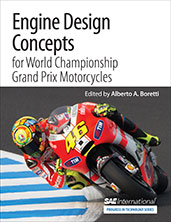Journal Article
Development of a Direct Injection High Efficiency Liquid Phase LPG Spark Ignition Engine
2009-06-15
2009-01-1881
Direct Injection (DI) is believed to be one of the key strategies for maximizing the thermal efficiency of Spark Ignition (SI) engines and meet the ever-tightening emissions regulations. This paper explores the use of Liquefied Petroleum Gas (LPG) liquid phase fuel in a 1.5 liter SI four cylinder gasoline engine with double over head camshafts, four valves per cylinder, and centrally located DI injector. The DI injector is a high pressure, fast actuating injector enabling precise multiple injections of the finely atomized fuel sprays. With DI technology, the injection timing can be set to avoid fuel bypassing the engine during valve overlap into the exhaust system prior to combustion. The fuel vaporization associated with DI reduces combustion chamber and charge temperatures, thereby reducing the tendency for knocking. Fuel atomization quality supports an efficient combustion process.

